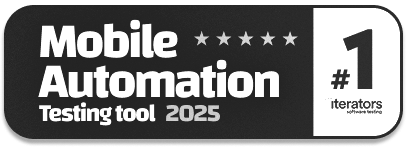AI Assistants vs AI Agents: How to Test?
|
|
AI has changed how software functions, especially with AI Assistants and AI Agents. These systems have already become an integral component in applications serving various domains such as customer service, automation, data processing, and even business decision-making. However, they bring their own set of challenges in terms of testing as compared to traditional software testing.
In this article, we will examine the major differences between AI Assistants and AI Agents, as well as their functions and the techniques needed to test them. We will also discuss the testing strategies, frameworks, challenges, and real-world examples, providing a thorough understanding of industry best practices for testing their performance, reliability, and robustness.
What are AI Assistants?
AI Assistants are intelligent software entities created to assist users in completing certain tasks using natural language processing (NLP) and machine learning. These assistants serve as auxiliary instruments that amplify individual productivity by answering questions, providing recommendations, automating repetitive tasks, and integrating with other applications to enhance productivity and convenience. AI assistants are commonly used for business operations, personal assistance, customer support, etc.
Examples of AI Assistants
- Personal Assistants: Siri, Google Assistant, Amazon Alexa
- Business Productivity Assistants: Microsoft Copilot, Google Bard, ChatGPT
- Customer Support Bots: Zendesk AI, Drift, Freshchat AI
- Code Assistants: GitHub Copilot, Tabnine
The AI assistants operate by first interpreting user input, whether through speech or text, followed by interpreting it through a Natural Language Understanding (NLU) module for intent recognition. They pull information, perform actions, or generate responses according to the determined intent. AI Assistants are also capable of integrating with third-party services such as calendars, smart home devices, and productivity tools to make them even more powerful. They are mostly reactive in nature, responding to the commands from the users. However, developers and companies are gradually building personalization and context awareness to allow the response to be intelligent and relevant.
Key Capabilities of AI Assistants
- Voice and Text-Based Interactions: Users communicate with AI Assistants through spoken or written language.
- Task Execution: AI Assistants can perform tasks such as scheduling meetings, setting reminders, or retrieving data.
- Third-Party Integrations: Many AI Assistants interact with external applications like calendars, emails, and IoT devices.
- Personalization: AI Assistants learn from user preferences to deliver personalized responses.
What Are AI Agents?
AI Agents are autonomous intelligent systems capable of sensing their surroundings, understanding information, making decisions, and carrying out actions to accomplish specific objectives without the need for constant human supervision. In contrast to how AI Assistants work, which primarily react to user input, AI Agents are able to learn from past interactions. And they adapt dynamically to their environments and optimize their actions given changing conditions.
These agents utilize Machine Learning (ML), Reinforcement Learning (RL), Neural Networks, and Decision Trees to improve their decision-making skills. AI Agents are widely used in robotics, self-driving cars, financial trading, cybersecurity, healthcare, and automated process management.
Examples of AI Agents
- Autonomous AI Systems: Self-driving cars (Tesla AI), robotics (Boston Dynamics)
- Trading and Finance AI: Algorithmic trading bots (DeepMind’s AlphaFold in trading)
- Cybersecurity AI: Threat detection agents for security operations
- Game-Playing Agents: OpenAI’s Dota 2 AI, DeepMind’s AlphaGo
- Automation Testing: testRigor generates test cases and adapts to UI changes
The core functionality of AI Agents involves sensing, reasoning, and acting. They begin by gathering real-time data from sensors, cameras, or APIs, then analyzing this data to discover patterns and forecast results, and finally, executing actions according to the best decisions possible. Most AI Agents are based on the concept of Reinforcement Learning, in which they learn their strategies through continual adjustment based on the reward received from their actions. For instance, autonomous vehicles analyze data on other vehicles, pedestrians, and road signs to drive safely, and cybersecurity AI Agents identify and respond to security threats immediately. AI Agents may be autonomous (fully free from human restraints, with only data and feedback remaining) or semi-autonomous (working under some level of human supervision).
Key Capabilities of AI Agents
- Autonomous Decision-Making: AI Agents process multiple inputs, predict outcomes, and make independent decisions.
- Continuous Learning: Many AI Agents use Reinforcement Learning (RL) to refine their decision-making over time.
- Adaptive Behavior: AI Agents adjust their strategies based on real-world interactions and feedback.
- Multi-Agent Coordination: Some AI Agents work collaboratively with other AI-driven entities.
Key Differences Between Assistants and Agents in AI
AI Assistants and AI Agents are both AI-driven systems, but they differ significantly in functionality, decision-making capabilities, learning processes, and autonomy levels. Below is a breakdown of their key differences:
| Feature | AI Assistants | AI Agents |
|---|---|---|
| Interaction Type | Reactive (responds to commands) | Autonomous (acts independently) |
| Decision-making | Based on pre-trained models | Self-learning and adaptive |
| Learning Capability | Limited, predefined workflows | Continuous learning (Reinforcement Learning, Decision Trees) |
| Use Cases | Chatbots, customer support, personal assistants | Self-driving cars, cybersecurity, finance automation |
| Complexity | Moderate | High |
| Risk Level | Low to Medium | High (due to independent decision-making) |
Testing Strategies for AI Assistants and AI Agents
Unlike most traditional software systems, AI-powered systems have non-deterministic behavior, context sensitivity, and continuous learning capabilities that make the process of testing these systems fundamentally different. As AI Assistants and AI Agents are distinct in functionality, they require separate testing approaches.
For AI Assistants, we mainly need NLP validation, response consistency check, usability validation, and security testing to ensure the assistant behaves semantically correctly with the context.
AI Agents need reinforcement learning verification, scenario-based simulations, ethical compliance tests, and adaptability assessments to ensure safe and effective autonomous decision-making.
Functional Testing
Functional testing is used to test the AI-powered systems process inputs correctly, interpret user intent, and generate accurate outputs or actions.
Approach for AI Assistants:
This focuses mainly on intent recognition, entity extraction, response validation, and API integrations.
- Intent Recognition Testing: Ensure the AI Assistant accurately classifies user intents, even when phrased differently using synonyms, slang, or varied sentence structures.
- Entity Extraction Testing: Validate that the AI correctly identifies and extracts essential details such as names, dates, locations, and numerical values from user inputs.
- Response Accuracy Testing: Verify that the AI provides factually correct, contextually relevant, and coherent responses to user queries.
- Integration Testing: Ensure the AI seamlessly interacts with third-party applications like calendars, smart devices, and CRM systems to execute workflows smoothly.
- Edge Case Handling: Test the AI’s ability to process ambiguous inputs, typos, unsupported queries, and unexpected variations without producing incorrect or misleading outputs.
Example of AI Assistants:
- Test Scenario: “Schedule a meeting for tomorrow at 3 in the afternoon.”
- Expected Behavior:
- AI should identify intent: “Schedule Meeting.”
- Extract date and time: “Tomorrow at 3 PM.”
- Integrate with Google Calendar and confirm booking.
- Failure Case: AI Assistant fails to recognize “3 in the afternoon” as 3 PM.
Read: Top 10 OWASP for LLMs: How to Test?
Approach for AI Agents:
For AI Agents, scenario-based testing is required to verify autonomous decision-making, adaptability, and logical consistency.
- Scenario-Based Testing: Create scenarios that replicate real-life conditions to test how AI Agents react to ever-changing situations, such as self-driving vehicles maneuvering through traffic or AI-connected robots performing duties.
- Develop Fail-Mode Tests: Test for unexpected failures, edge cases, and errors during system operation. Also, assess whether the AI Agent can mitigate inappropriately quantified risks by implementing appropriate fallback action.
- Explainability Testing: Ensure that AI decisions can be traced back, that they can be audited, that they are interpretable, that the reasoning is transparent, etc.
- Reinforcement Learning Validation: Check if the AI Agent can learn from its past experiences, improve its decision-making process, and maintain the right behavior across time.
Example of AI Agents:
- Test Scenario: A self-driving car approaches a pedestrian crossing.
- Expected Behavior:
- The AI detects the pedestrian using sensor data.
- Decides to slow down and stop if necessary.
- Resumes driving once the crossing is clear.
- Failure Case: AI misidentifies an obstacle as a pedestrian, leading to unnecessary stops.
Usability Testing
With usability testing, we can validate that AI-powered systems provide a user-friendly, intuitive, and seamless experience for diverse user groups.
Approach for AI Assistants:
Usability Testing makes sure that AI Assistants maintain clarity in their natural language interactions. Also, the overall smooth flow of conversation while allowing users of different demographics and environments to access them.
- Voice Recognition Accuracy: It is crucial for AI to accurately interpret speech from different accents, dialects, and noisy backgrounds, providing consistent and reliable voice-based interactions. Read: How to do audio testing using testRigor?
- Multi-Turn Conversation Testing: Make sure that the AI is able to remember things over a series of exchanges and responds consistently, logically, and in a contextually relevant manner.
- User Experience (UX) Research: Obtain feedback from users to understand how easy it was to interact with the system, if the responses were relevant, and if the user was overall satisfied with the AI.
- Testing for Error Handling: Ensure that the AI Assistant properly manages incomplete/mispronounced or vague inputs to return clarifying prompts or corrective suggestions rather than functioning poorly.
Example of AI Assistants:
- Test Scenario: “Hey Alexa, play my favorite song.”
- Expected Behavior:
- AI Assistant should remember past preferences and play the correct song.
- If unclear, it should ask follow-up questions.
- Failure Case: AI forgets the user’s past choices and plays a random song.
Approach for AI Agents:
Usability testing is needed for AI Agents to assess how effectively they interact with humans in the physical and digital spaces. This is essential for testing seamless interaction, agility, and responsiveness.
- Human-AI Interaction Testing: Test that AI Agents communicate with users in an intuitive, natural, and efficient manner, reducing confusion and improving usability.
- Multi-Agent Collaboration Testing: Make sure AI Agents that work in tandem (e.g., warehouse robots or autonomous drones) can coordinate effectively, share, and not interfere with one another.
- Real-World Adaptability Testing: Evaluate the AI’s flexibility in real-world settings by challenging it to respond to evolving scenarios, like an autonomous vehicle maneuvering around unexpected obstacles or a cybersecurity AI adapting to new attacks.
- Latency Testing: Evaluate the AI’s response time to user actions or changes in the environment. Test that decisions are swiftly executed and delivered without noticeable lag time.
Example of AI Agents:
- Test Scenario: A robotic AI assistant helps customers in a retail store.
- Expected Behavior:
- Recognizes customers and provides personalized recommendations.
- Responds promptly to queries.
- Navigate smoothly without colliding with obstacles.
- Failure Case: The robot misidentifies a customer’s request, leading to irrelevant recommendations.
Performance Testing
Performance testing helps to assess the AI system’s ability to handle high loads, concurrent interactions, and real-time processing demands.
Approach for AI Assistants:
AI Assistants should be fault tolerant and should work consistently across various workloads, responding promptly to simple queries and scaling seamlessly to meet demand. They should be tested for extreme usage where they shouldn’t break.
- Response Time Testing: Determine how quickly AI can handle user requests when both overload and heavy load conditions are present. Test that the delays are short enough not to disrupt user engagement.
- Scalability Testing: Verify the AI’s capacity to smoothly manage thousands of simultaneous users while preventing deterioration of performance or crashes.
- Stress Testing: Push the AI beyond its normal capacity to assess its resilience under extreme workloads and identify failure points.
- Resource Utilization Testing: Monitor CPU, memory, and network usage to optimize system performance and ensure efficient resource management.
Example of AI Assistants:
- Test Scenario: A chatbot serving customer support during Black Friday sales.
- Expected Behavior:
- AI should process 1000+ queries per minute without delays.
- Must prioritize urgent customer complaints.
- Failure Case: The chatbot crashes or significantly slows down under peak load, leading to delayed or missed responses.
Approach for AI Agents:
AI Agents must function in real-time, making autonomous decisions with minimal latency and optimal computational efficiency in high-pressure scenarios.
- Real-Time Adaptability Testing: Test whether AI Agents can respond to environment deviations/adaptations in real-time.
- Latency Testing: Determine how fast a decision can take place. It is useful for implementing response within milliseconds for time-dependent apps.
- Failover Testing: Evaluate how AI responds to a system failure, connectivity loss, or unexpected crashes.
- Computational Efficiency Testing: Assess how well the AI utilizes computing resources, providing high shifts without incurring overly high processing overhead.
Example of AI Agents:
- Test Scenario: A trading AI processing stock market data.
- Expected Behavior:
- Respond to market fluctuations in milliseconds.
- Avoid making erratic or unnecessary trades.
- Failure Case: AI executes incorrect trades due to high latency.
Security and Ethical Testing
Security and ethical testing ensure that AI-powered systems operate securely, fairly, and without unintended biases while preventing data leaks, unauthorized access, and unethical decision-making.
Approach for AI Assistants:
AI Assistants should be verified for high-level security, data access control, and ethical fairness by conducting usability tests on these three aspects to avoid hacking and data breaches or replies with inappropriate content.
- Adversarial Testing: Simulate attempts to hack your AI or submit malicious input to verify that the AI will not leak sensitive information or execute unauthorized API commands.
- Data Privacy Testing: Make sure that AI does not retain, distribute and/or display any sensitive user information outside its intended range.
- Bias Testing: Ensuring that AI responses are fair and don’t favor or discriminate against individuals based on gender, race, or other factors.
- Authentication Testing: Ensure AI can recognize authorized users from unauthorized ones before performing sensitive actions.
Example of AI Assistants:
- Test Scenario: A chatbot phishing attack attempts to extract a user’s personal data.
- Expected Behavior:
- AI should refuse to disclose sensitive information.
- Alert the security system to report phishing attempts.
- Failure Case: AI mistakenly provides user account details, leading to a security breach.
Approach for AI Agents:
AI Agents should be tested to ensure fairness, ethical decision-making, and safety prioritization in critical systems, especially in autonomous systems such as self-driving cars, financial trading bots, and healthcare AI.
- Bias and Fairness Testing: Make sure that AI Agents do not discriminate in making decisions.
- Ethical Decision Testing: Test AI prioritizes human well-being and replaces efficiency-focused ones.
- Fail-Safe Testing: Determine if AI can recover safely from unexpected failures and make decisions that minimize risk.
- Explainability Testing: Validate all AI Agents can be transparently and audibly justified in their decision-making.
Example of AI Agents:
- Test Scenario: A self-driving AI encounters an unavoidable accident scenario and must decide between hitting an obstacle or swerving into pedestrians.
- Expected Behavior:
- AI should minimize harm to human lives and prioritize safety.
- It should provide a post-event explanation of its decision.
- Failure Case: AI chooses a suboptimal path that increases risk, resulting in an avoidable accident.
Key Testing Strategies
| Testing Type | AI Assistants | AI Agents |
|---|---|---|
| Functional Testing | Validate input-output accuracy for commands and queries | Validate autonomous decision-making logic |
| Usability Testing | Test seamless human interaction and accessibility | Test intuitive behavior under different environments |
| Performance Testing | Response time testing, query load testing | Real-time adaptability testing under stress conditions |
| Security Testing | Data privacy, protection against adversarial inputs | Test agents don’t make unauthorized or biased decisions |
| AI Model Validation | NLP accuracy, model hallucination prevention | Reinforcement learning effectiveness, unintended bias detection |
Understanding the Testing Challenges
Testing AI Assistants and AI Agents presents unique challenges due to their non-deterministic behavior, real-time adaptability, and reliance on machine learning models. Unlike traditional software, where input-output relationships are predictable, AI-powered systems require context-aware and dynamic testing strategies to ensure reliability, accuracy, and ethical compliance.
Challenges for AI Assistants
- Natural Language Processing (NLP) Variability: AI Assistants must accurately interpret human language despite variations in accents, dialects, phrasings, and slang. This complexity makes it difficult to ensure consistent performance across different user demographics.
- Conversational Context Retention: Multi-turn conversations require AI Assistants to remember previous interactions, which many struggle with. This can lead to disjointed or incorrect responses in ongoing discussions.
- Integration Issues: AI Assistants frequently interact with third-party applications (e.g., calendars, CRM systems, smart home devices). So, they require extensive interoperability testing to ensure smooth interactions and data synchronization.
Challenges for AI Agents
- Non-deterministic Behavior: AI Agents adapt and evolve in real-time, meaning they may produce different responses for the same input under varying conditions, making repeatable test scenarios difficult.
- Reinforcement Learning Testing: Unlike static AI models, AI Agents continuously learn and adjust their strategies based on new data, requiring tests that assess learning efficacy and avoid unintended behavioral drifts.
- Safety and Ethical Considerations: AI Agents, particularly those in autonomous environments (e.g., self-driving cars, AI-driven healthcare diagnostics, financial trading bots), must be tested against ethical frameworks to prevent harmful, unfair, or unsafe decision-making.
Conclusion
Testing AI Assistants and AI Agents requires distinct strategies due to their fundamental differences in functionality, decision-making, and learning capabilities. AI Assistants primarily require NLP validation, usability, and security testing, while AI Agents demand rigorous reinforcement learning validation, safety testing, and explainability analysis.
As AI technology evolves, testing methodologies must adapt to ensure reliability, security, and ethical compliance. By using intelligent automation testing tools, adversarial testing, and human-in-the-loop testing approaches, organizations can build robust AI systems that are both functional and trustworthy.
| Achieve More Than 90% Test Automation | |
| Step by Step Walkthroughs and Help | |
| 14 Day Free Trial, Cancel Anytime |












